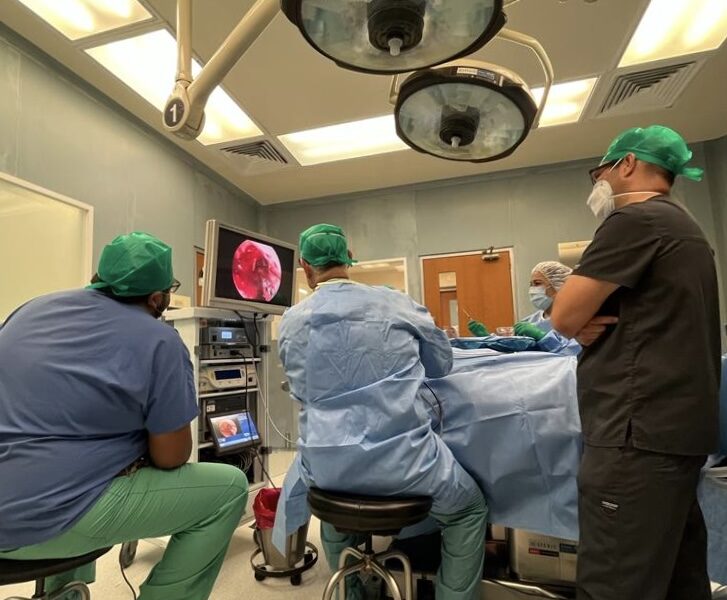In hospitals across Canada, medical staff often overlook a critical factor in surgical success: A patient’s nutritional status. While surgical teams meticulously plan for every detail of an operation, something as simple as inadequate nutrient intake can quietly undermine even the most carefully orchestrated procedures. Despite its profound impact on recovery and surgical outcomes, malnutrition remains an invisible problem for many patients.
Chelsia Gillis, assistant professor at McGill’s School of Human Nutrition in the Faculty of Agricultural and Environmental Sciences, recently published a paper in Applied Physiology, Nutrition, and Metabolism highlighting Canada’s lack of preoperative surgical nutrition practices.
The study addresses the importance of malnutrition screening before surgery and its ability to significantly improve patient outcomes, including reduced length of stays and fewer surgical complications. However, the study reveals that screening for malnutrition is not a consistent practice across healthcare facilities.
“Malnutrition is an unbalanced nutritional state that modifies body mass, body composition, and function,” Gillis wrote in an email to The Tribune.
For surgical patients, malnutrition often manifests as unintentional weight and muscle loss, compromising recovery, immune function, and overall health.
“Preoperative malnutrition is associated with poor patient outcomes including prolonged length of hospital stay, surgical complications, and survival,” Gillis explained.
Despite the well-documented risks, the study’s survey still found that only 65 per cent of healthcare professionals (HCPs) reported actively screening for malnutrition in surgical patients, with dietitians leading the charge.
“The good news is that malnutrition is modifiable,” Gillis wrote. This means that there is a real opportunity to make a difference if this issue can be addressed early in the patient’s surgical journey.”
The study surveyed 225 HCPs across Canada, including dietitians, physicians, and allied health professionals. While 96 per cent of respondents agreed that malnutrition is a modifiable risk factor and a treatment priority, many noted practical barriers that prevent them from routinely screening patients.
“Clinicians don’t have the opportunity, [whether that’s] time [or] resources, to screen for malnutrition,” Gillis said.
The study found that lack of time (according to 57 per cent of respondents), resources (according to 40 per cent of respondents), and support (according to 38 per cent of respondents) were the most frequently cited barriers to screening. These challenges were particularly evident among physicians, who were less likely to conduct routine screenings compared to dietitians.
Interestingly, 20 per cent of HCPs stated that they did not view nutrition risk screening as their responsibility. Gillis countered this notion, arguing that malnutrition screening should be a collective responsibility.
“It is everyone’s responsibility. Make every contact count,” Gillis stressed. Nonetheless, the initial nutrition screen is performed by nurses in most settings.
Gillis also suggested some practical solutions to address the barriers.
“Patients can self-screen for malnutrition risk, which would save time for clinicians,” Gillis proposed. “Malnutrition treatment should occur on a risk-stratified basis, meaning that the majority of resources are dedicated to those who would benefit the most, such as severely malnourished patients.”
The study also noted that many HCPs relied heavily on physical traits like weight and muscle appearance to assess malnutrition. Gillis, however, warned against this approach, noting that malnutrition is not always obvious.
“The Canadian Malnutrition Task Force […] found that 32 per cent of patients suffering from malnutrition had a body mass index over 30,” Gillis explained. “The phenotype of malnutrition includes unintentional weight loss and loss of muscle mass, which is not necessarily obvious by looking at the patient.”
The study’s findings also highlight the need for systemic changes in how hospitals approach preoperative nutrition. The study calls for the use of standardized screening protocols, like the Nutrition Care Practice Model, and recommends incorporating nutrition screening into electronic health records to ensure consistency.
Moving forward, Gillis and her team are working on creating toolkits to help busy HCPs integrate malnutrition screening and treatment into their practices. These toolkits are part of a larger effort to bridge the gap between knowledge and action regarding nutrition care in preoperative settings.






